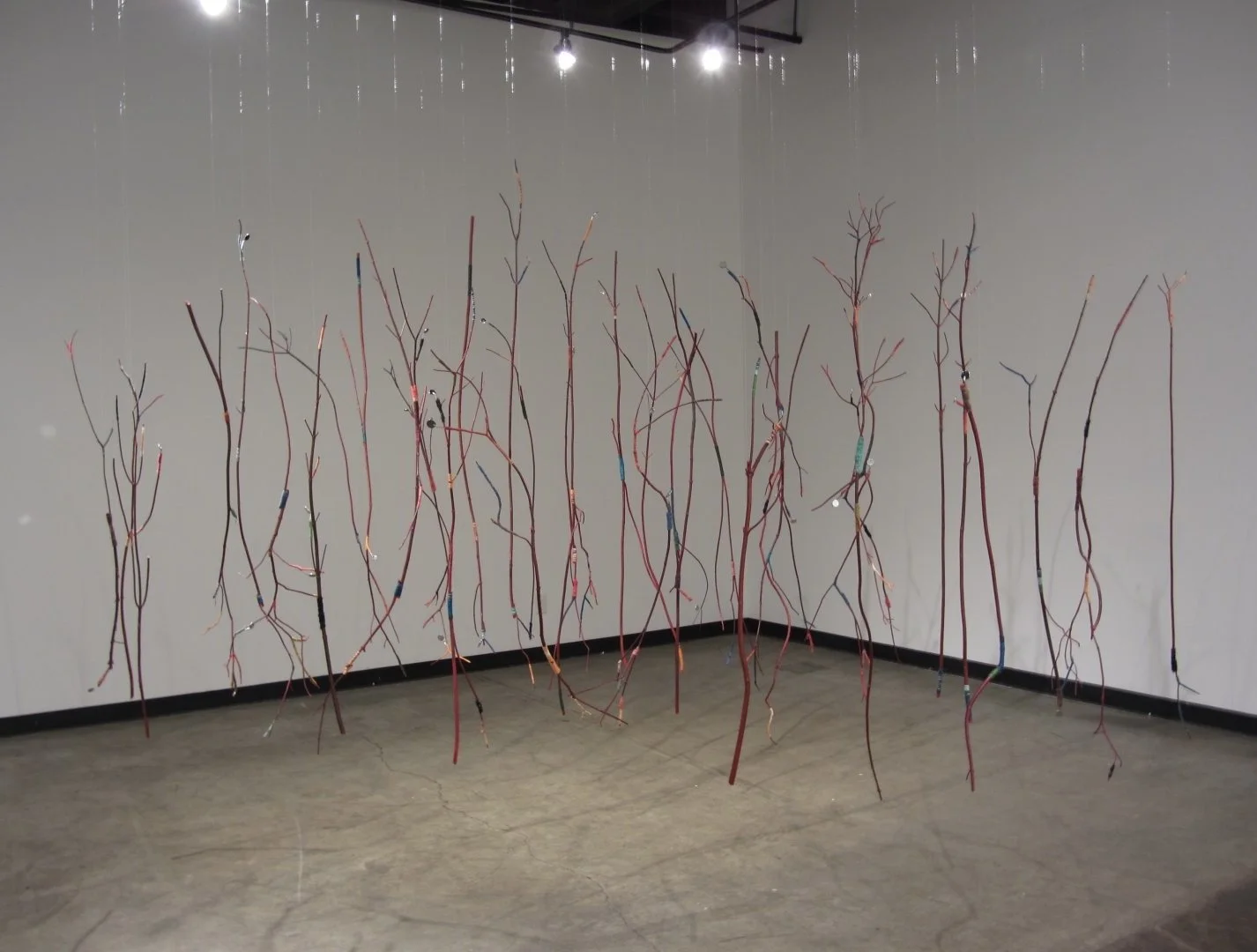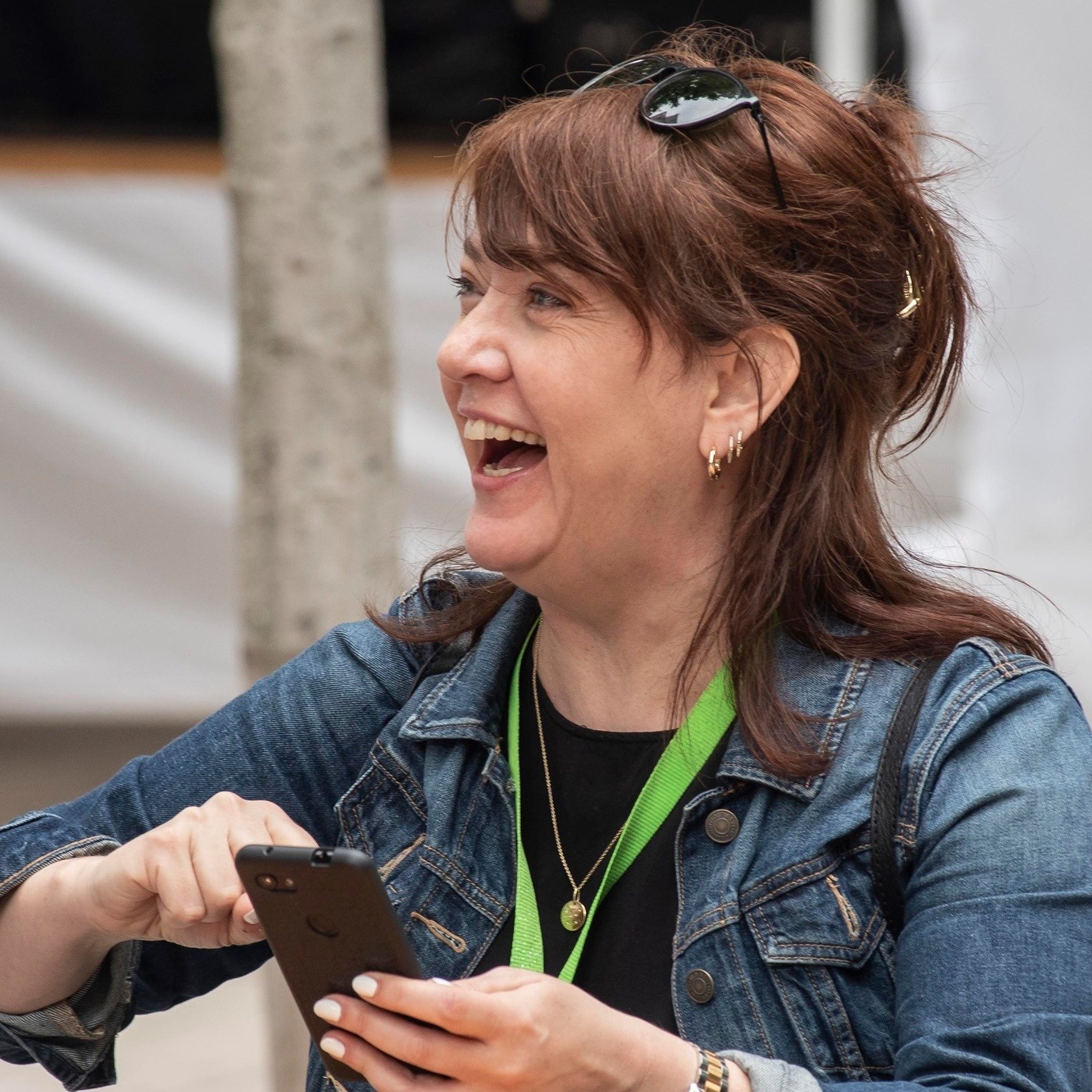New street banners bridge Musqueam and Punjabi cultures in Indian Summer project
Debra Sparrow and Jag Nagra’s birds and bold textile patterns help renew the historic Punjabi market
Photo by Jag Nagra
VANCOUVER’S PUNJABI Market has teamed up with the Indian Summer Festival to bring a burst of culture-connecting colour to southern Main Street.
Musqueam (Xʷməθkʷəy̓əm) artist Debra Sparrow (θəliχʷəlʷət) and illustrator and Punjabi Market Regeneration Collective member Jag Nagra have created designs for a new street-banner project. The series between 48th and 51st streets recognizes the deeper heritage of the area.
Sparrow has created vivid geometric designs that reflect the blanket patterns woven by Musqueam women, alongside modern-designed birds emblazoned with Salish elements. Nagra, meanwhile, juxtaposes bold prints inspired by phulkari, traditional embroidery from the Punjab region of India, alongside stylized peacocks.
Indian Summer curated the project, asking the two artists to explore the idea of place and placemaking, a nod to the Punjabi Market’s location on unceded, ancestral Musqueam territory and marking 51 years as a hub for the South Asian community.
Nagra told Stir it’s the first time in the Punjabi Market’s 50-year history that Musqueam banners have flown there—a fact she finds deeply meaningful.
“The pairing and collaboration with Musqueam artist Debra Sparrow ended up being a beautiful compliment to not only Punjabi Market, but to each of our sets of banner,” Nagra said. “She drew a Musqueam blanket pattern and two sparrows, and they work beautifully as a series.”
Photo by Jag Nagra
The Musqueam Nation’s banners are symbolically installed on the first and last poles on the street as an “embrace” of the entire project and the Punjabi Market. The street banners will stay in place until 2023.
Nagra says her own design draws from the folk embroidery she’s always been drawn to. “It has always carried a sense of importance when it comes to my experience with my Indian heritage,” she says, “and in the way that each individual thread comes together to create a large vibrant and ornate piece, I feel very much that the community that surrounds and makes up Punjabi Market is very much like each thread coming together to create something beautiful.
“The peacock is the national bird of India and I wanted some connection to nature in some way through my art,” she adds.
Nagra, who studied graphic design and has gone on to create illustrations for outlets from Vogue Magazine to Microsoft, pulls inspiration from her South Asian culture in her art. But that hasn’t always been the case.
“Before I started work in Punjabi Market, I never used to draw South Asian themes in my art,” she reflects. “I suppose by having grown up in the suburbs without a connection to the Indian community outside of my own family, there were parts of me that never really felt Indian enough. But through my work with the Punjabi Market Regeneration Collective, I’ve found my voice and my identity, and for the first time in my life, I feel like the art I create has a direction connection to who I am as a person.”
The project is part of a larger vision of renewal for the Punjabi Market. Nagra serves as creative director on the regeneration collective board, whose hope is to revitalize the hub from an art and culture lens to bring a sense of community back to the area.
“Growing up, we used to come to Punjabi Market and spend the day shopping—or rather, following my parents around from store to store—and having lunch at Himalaya Restaurant,” Nagra recalls. “Those are very fond memories that I hold on to dearly.
“By creating public art, public spaces and platforms for storytelling and creating art, I’m excited to have a role in helping give Punjabi Market a renewed identity that’s been missing for the last several years,” she adds. “Punjabi Market has been here for 50 years and I’m hoping we can remind people that it’s still here, waiting to see what the next chapter looks like. This is the most satisfying, most challenging and most rewarding work I’ve ever done in my life. It gives me life. I hope that as my kids grow, they’re able to spend time in Punjabi Market and see the fruits of our labour and make their own memories of such a historic place.”















